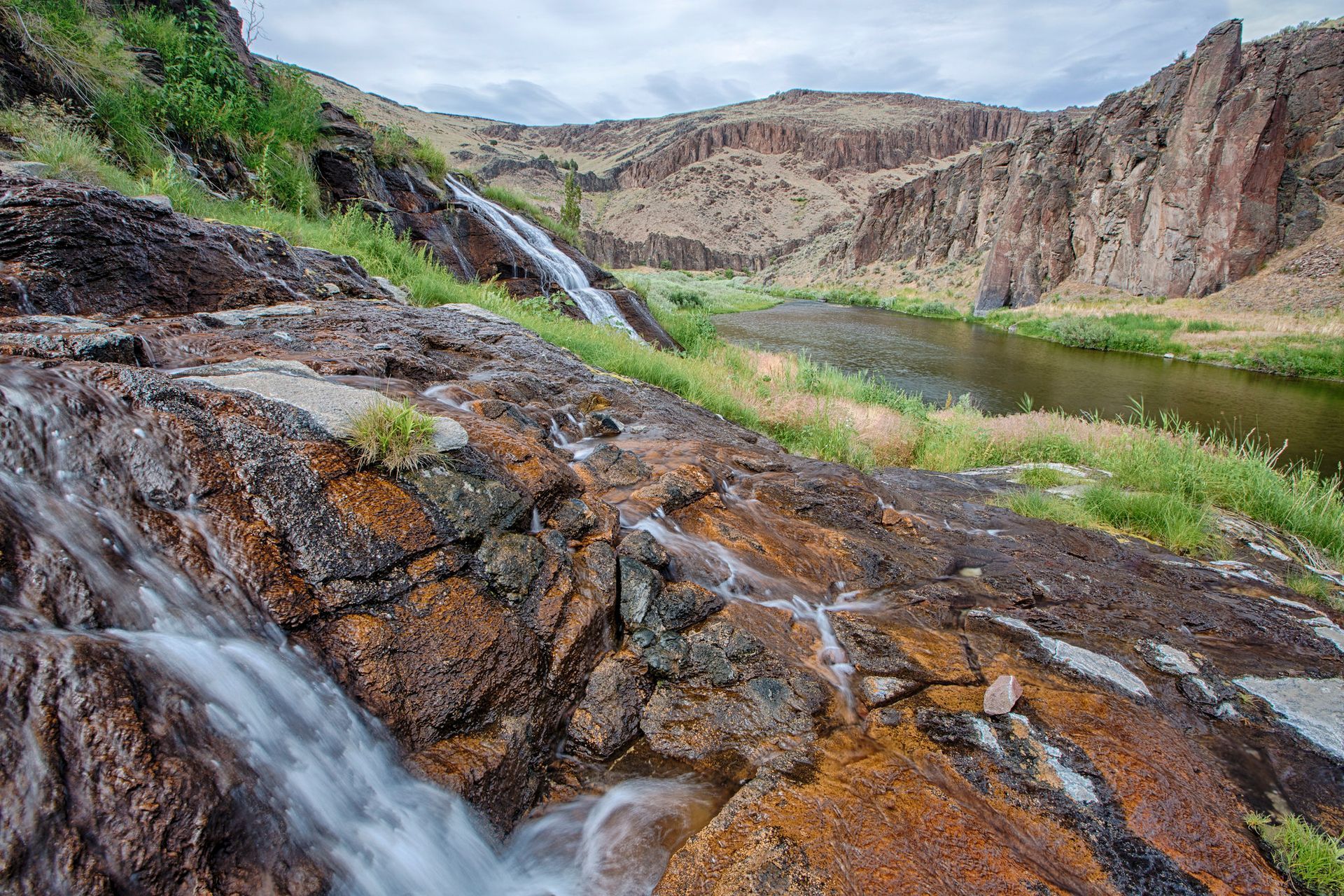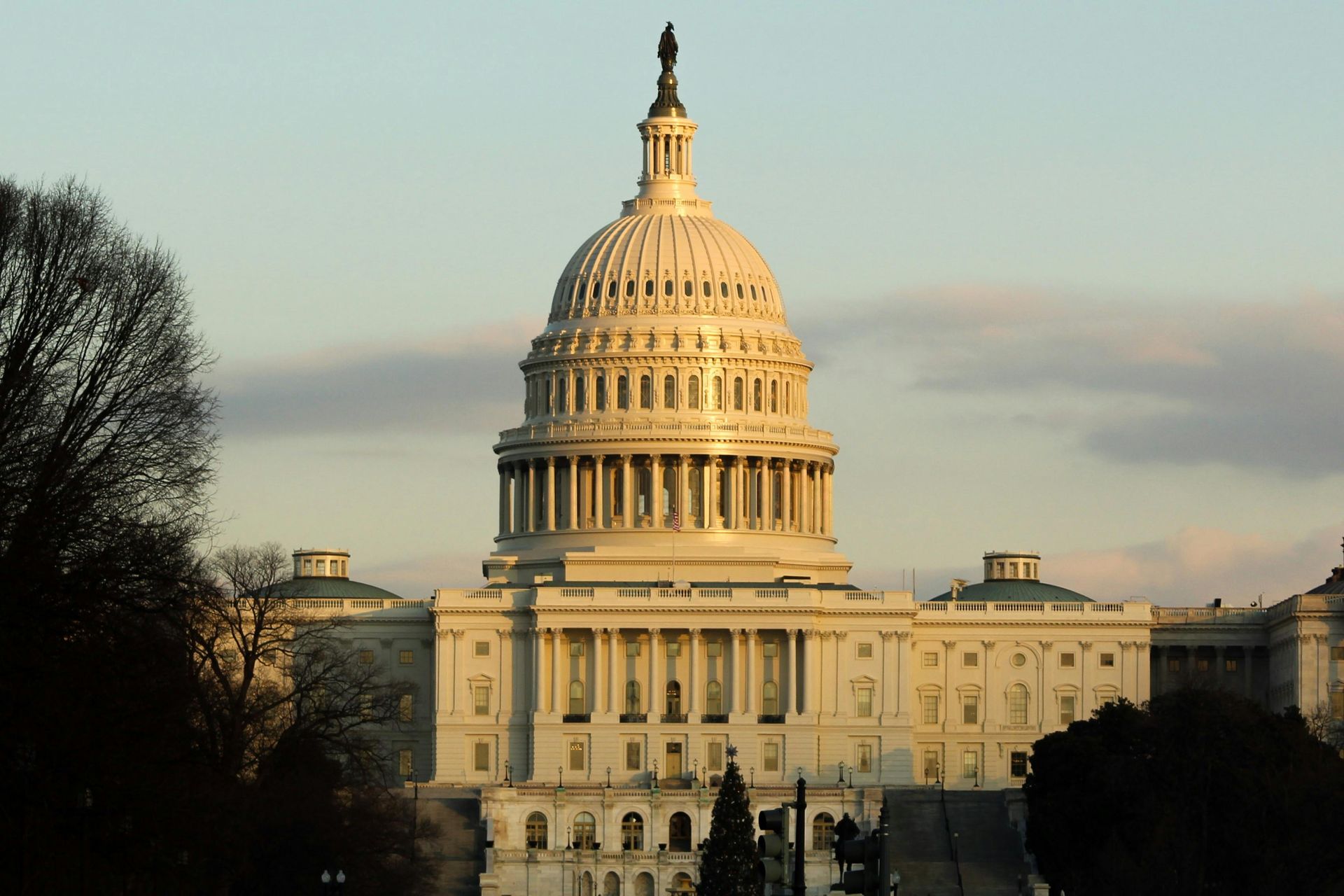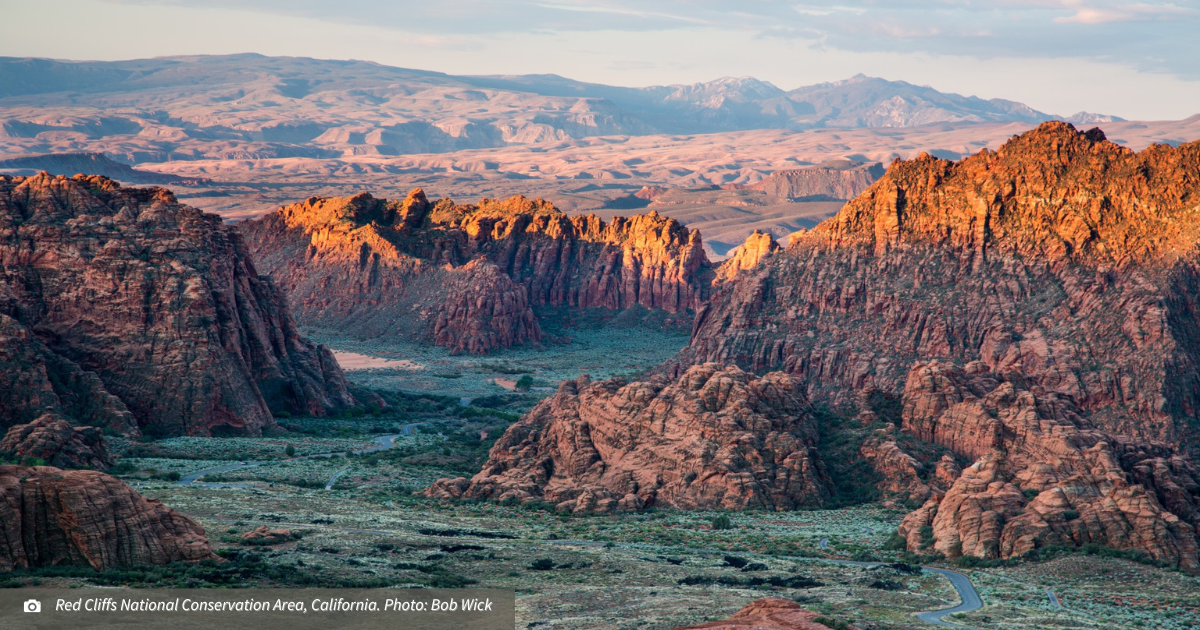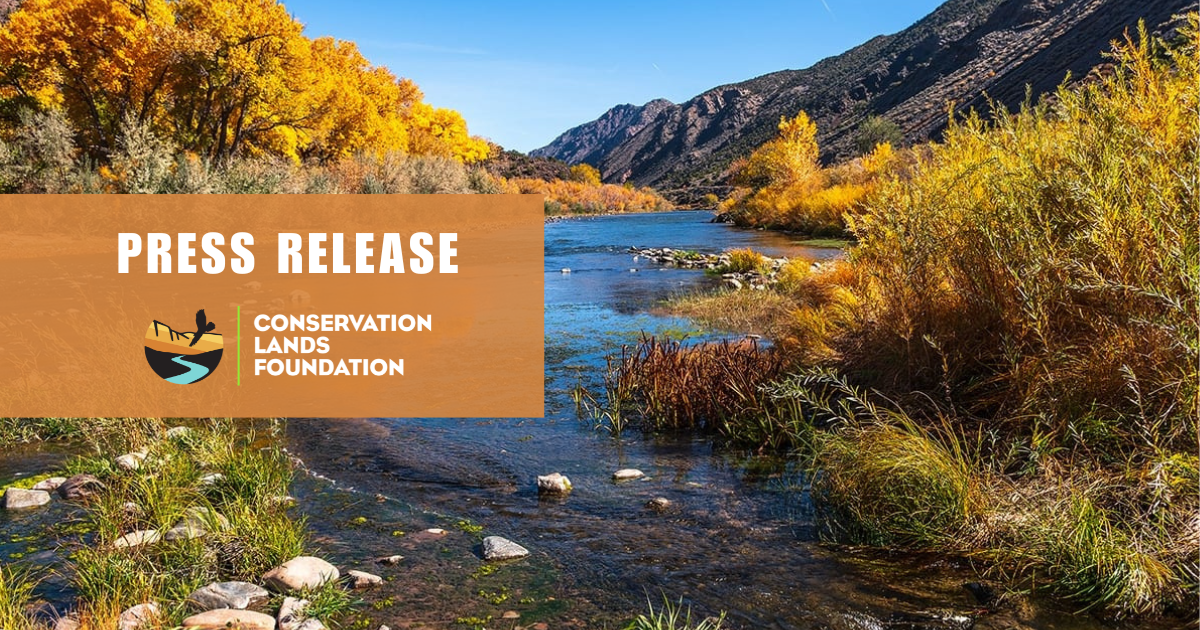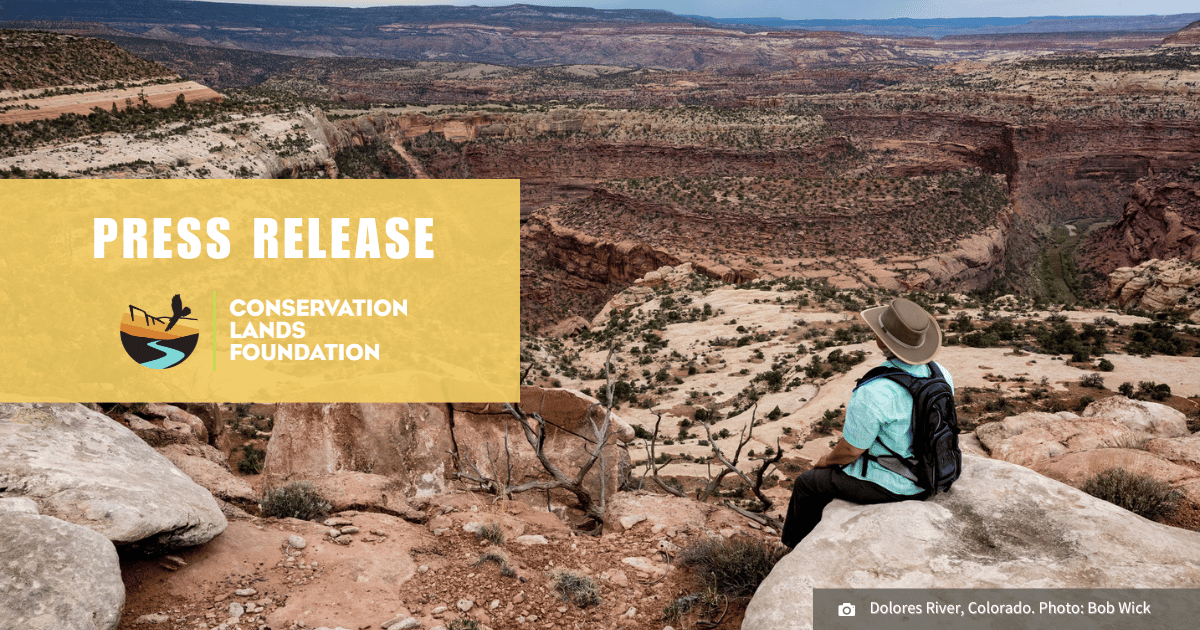Press Release: U.S. Supreme Court Rejects Utah Case to Seize Federal Lands

U.S. Supreme Court Rejects Utah Case to Seize Federal Lands
18 million acres of public lands will remain protected from extraction and exploitation, for now
Washington, DC (January 13, 2025) – Today, the United States Supreme Court agreed to not hear a case that could decide whether America’s federal, public lands can be sold to private companies for profit.
Earlier this year, with the backing of Republican officials from 12 other states, the state of Utah filed an unprecedented lawsuit at the United States Supreme Court seeking an order requiring that the federal government begin selling off or otherwise “disposing” of more than 18.5 million acres of public lands in Utah. If successful, this effort would have implicated more than 200 million acres of public lands across the West. These lands, currently held in trust for the American people, are targets for privatization, degradation, and oil and gas drilling.
The sell-off and privatization of public lands has sparked intense opposition, with a broad coalition of western residents, elected officials, sportsmen, and advocacy groups vocally resisting these efforts. While the Supreme Court rejected Utah’s current efforts, attacks to America’s public lands are anticipated to continue in the upcoming administration. Today’s decision comes on the heels of the 119th Congress voting on a rules package to accelerate the sale of public lands.
Quotes in Reaction to the Supreme Court Case and Public Land Seizer
“We must stand united against this un-American land grab to ensure that our public lands remain accessible and protected for future generations. Our public lands are not for sale. Full stop.” – Senator Martin Heinrich (D-NM), Ranking member of the Senate Energy and Natural Resources Committee
“This lawsuit is an assault on the country’s long-standing and successful history of safeguarding valuable and vulnerable landscapes in trust for all Americans, and while the Supreme Court’s decision to not hear the case is a reprieve, we fully expect this small group of anti-public lands politicians continue to waste taxpayer dollars and shop their bad ideas, said Chris Hill, Chief Executive Officer for the Conservation Lands Foundation. “Public lands are incredibly popular with Utahans and all Americans and this aggressive attack and blatant power-grab by a handful of Utah politicians could open the country’s remaining natural landscapes to largely unregulated exploitation of its resources–thereby closing them from the public. We will continue to defend and preserve the public’s access to public lands.”
“Utah’s case is massively flawed, and we’re pleased to see the Court recognize that and leave 150 years’ worth of established public lands law firmly in place. The nation’s public lands are as popular as ever. People want these places conserved and managed responsibly--not sold off, privatized or despoiled. Today’s news is good for the stability, safety and sustainability for America’s public lands and the people who depend on them”, said Alison Flint, Senior Legal Director at The Wilderness Society. “While the Court's decision denying original review of Utah's claims is welcome news for our shared public lands, we fully expect Utah’s misguided attacks to continue and stand ready to mount a robust defense to ensure our public lands are protected.”
“We’re grateful the Supreme Court swiftly rejected the State of Utah’s misguided land grab lawsuit. For more than 100 years, the Supreme Court has affirmed the power of the federal government to hold and manage public lands on behalf of all Americans,” said Steve Bloch, Legal Director for the Southern Utah Wilderness Alliance. “If successful, Utah’s lawsuit would result in the sale of millions of acres of public lands in redrock country to the highest bidder, an end to America’s system of federal public lands, and the dismantling of the American West as we know it. The Southern Utah Wilderness Alliance will continue our unwavering efforts to ensure every attempted land grab by Utah politicians fails.”
“The Supreme Court was correct to reject this unfounded lawsuit. More than a century of legal precedent is clear – it is the role of the federal government to manage public lands for the benefit of all Americans. This lawsuit and its backers sought to overturn that precedent, giving away public resources for the private profit of big corporations. For more than a century, our parks and public lands have been part of what makes us special as a country, and we will continue to defend the right of all Americans to enjoy and explore those landscapes,” said Sanjay Narayan, Chief Appellate
Counsel of Sierra Club’s Environmental Law Program
"The Supreme Court's decision to decline hearing Utah's lawsuit is a win for Colorado's public lands and the many people who value them. It reinforces how public lands are more than just iconic landscapes across the West, but also a core part of our national identity,” said Scott Braden, Director of Colorado Wildlands Project. “Unfortunately, it also underscores the importance of designations to protect our wildlands. For Colorado, this means we must continue working to preserve places like the Dolores Canyons, ensuring they remain intact and accessible to the public for future generations to enjoy and explore."
“Public lands are one of America’s best ideas and an intrinsic part of our identity,” said John Robison, Public Lands and Wildlife Director for the Idaho Conservation League. “This takeover effort was never about “local control” but ultimately about selling off our natural heritage to the highest bidder.
We are glad that the Supreme Court rejected this takeover attempt/We are dismayed that the Supreme Court is entertaining this takeover attempt/ and will do everything in our power to make sure that public lands stay in public hands.”
America's opinion leaders are also deeply opposed to selling off public lands:
Denver Post, Utah’s twisted lawsuit is corrupting the West’s (and Colorado’s commitment to public lands,(December 30th, 2024)
“The greatest assault on public lands in American history is being led by Utah’s Gov. Spencer Cox, who is suing the federal government to take over 18.5 million acres of public lands managed and protected by the Bureau of Land Management.
The lawsuit makes us question for how many more generations the promise of Yellowstone National Park – “For the benefit and enjoyment of the people” – will stand in America. And the mentality of public lands being disposable to the highest bidder may be seeping into states across the West.
Cox claims he wants the land to “actively manage and protect our natural resources.” But it’s hard not to suspect that the real reason he wants to remove the Bureau of Land Management’s oversight of these public lands is to open them up for private profit – development, mining, logging and disposal — at the expense of the American people”
Idaho Statesman, Utah revives public land grab scheme, (September 22, 2024)
“The courts have made a more conservative turn, but I don’t think even this Supreme Court is likely to overcome the quite clear law and Constitutional provisions that would bar Utah from taking over public lands,” University of Colorado environmental law professor Mark Squillace told the AP.
But we shouldn’t count on that. We should apply continuous pressure against this and similar land-grabbing efforts (like the hundreds of thousands of dollars Idaho has spent on dubious efforts to have its federal lands valued).
If you’re against the land-grabbing movement, make sure your elected officials know it — particularly Attorney General Raul Labrador, who can decide whether Idaho files an amicus brief in support of Utah’s lawsuit.”
Salt Lake Tribune, Utah’s Latest Land Grab Lawsuit has No Legal Leg to Stand on, (September 8, 2024).
“In the 2004 adventure movie “National Treasure,” the Nicolas Cage character tries to convince people at the National Archives that there is a secret message on the back of the original Declaration of Independence. Written in invisible ink.
In the story, it turns out that such a message really exists, and leads to the discovery of a large treasure that has been lost for more than 200 years.
In real life, the claim that a key government document contains invisible, century-old messages that only a few clever people know about is the core of Utah’s latest lawsuit seeking to seize millions of acres of federal land.In other words, a total fantasy. An expensive and embarrassing one.”
Las Vegas Sun, Utah has no case for clawing back public land, but court unpredictable, (November 24, 2024)
“The Supreme Court must reject Utah’s misguided attempt to seize public lands. The stakes are too high. If the court allows this lawsuit to succeed, it will not only privatize millions of acres of public land but also jeopardize the West’s way of life and undermine the very principle of shared stewardship that defines our nation’s public lands.
America’s public lands are a trust — not just for this generation but for all those to come. We must protect them, not for profit or political gain, but for the enduring benefit of all.”
The New York Times - John Leshy, Utah Wants the Supreme Court to Give It Land Owned by All Americans, (January 8th, 2025)
“Utah seeks to give a small group of unelected justices, and not Congress, ultimate authority over America’s public lands, owned by all Americans and entrusted to the federal government for their wise use and protection. The result would most likely spell disaster for the stewardship of some of the nation’s most significant landscapes, while accelerating the decline in the court’s stature with the American people.”
Outside Magazine, 18.5 Million Acres of Public Land Are on the Line in Utah in a New Lawsuit, (September 16, 2024).
“Politicians in Utah have a long history of trying to sell off your public land to benefit the oil, gas, and other extractive industries that fund their campaigns. This time they’re trying to do it with a lawsuit designed to go straight to the Supreme Court. That lawsuit argues that all Bureau of Land Management acres within the state’s borders should be transferred to Utah’s control.
If they succeed, the public could lose access to millions of acres that we use to pursue our favorite outdoor activities, wildlife could lose its habitat, and the environment could suffer. Worse, if the Supreme Court accepts the theory that states should have control over federal land, the upshot could be devastating. It could create precedent that might allow politicians in other western states to do the same.”
